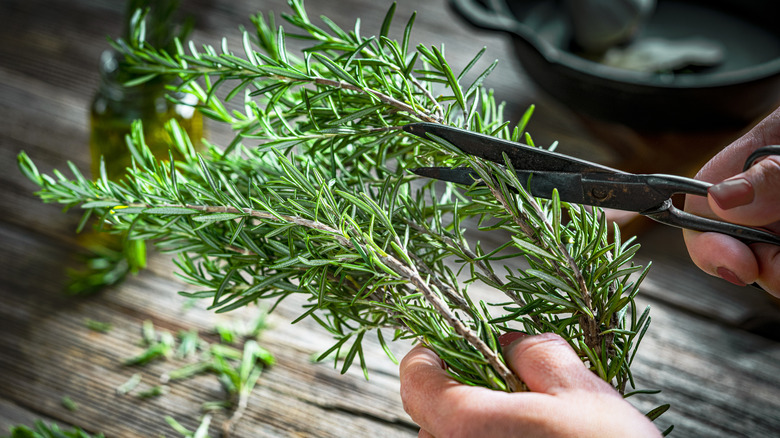Help Your Rosemary Plants Thrive With One Simple Addition To The Soil
We may receive a commission on purchases made from links.
Growing fresh rosemary sounds easy enough. You just need to plant it, water it, and wait for the tasty bits to grow, right? Well, not quite. Rosemary can be a bit of a tough herb to keep healthy as it's a little fussy when it comes to one particular element: drainage. It hates to have its roots sitting in wet soil, in fact, that's a surefire way to cause the plant to rot. Luckily, just one simple addition to the soil can dramatically improve rosemary's chances of not only surviving but really thriving: gritty materials like sand, gravel, or perlite.
In order to have the best plants possible, it's also important to consider all of rosemary's growing conditions. Rosemary loves the sun and needs six to eight hours of direct sun per day to grow big and bushy so keep it in a sunny spot. As mentioned, it hates being soggy. This will be an issue after heavy rain if you haven't made sure it's in the right soil. But if you're using the grit or sand trick, you'll be one step ahead. These materials create air pockets that keep water moving and allow the roots to breathe.
Spacing matters, too. You need to give rosemary plants the room they need to grow into the bushy plants you want them to be. And if you're wondering how and when to harvest rosemary for the best flavor? You're better off clipping it in the morning once the plant has bloomed since this is when the flavor is most concentrated.
Choose the right spot for happy rosemary
To make this drainage trick come to life, you don't need to completely overhaul your herb bed with gravel; just a handful of pebbles or even chicken grit will do wonders to improve the drainage quality. If you're planting your rosemary in a pot, try using a cactus or succulent mix with some grit thrown in. Trust us, your plant will thank you for its well-drained environment by growing extra delicious — since you are replicating the rocky Mediterranean climate that rosemary comes from.
With these adjustments in mind, caring for your rosemary plant is otherwise relatively simple. Occasional pruning works to encourage bigger growth and stop it from getting woody. Make sure you avoid over-watering the soil, but it likes when you give the top of its greenery a little mist from time to time.
In addition to enjoying it baked into bread, roasted with veggies and chicken, or infused into olive oil, rosemary has a lot of other uses. And did you know you can even transform fresh rosemary into a mosquito repellent? Just another reason to make sure it's included in your herb garden lineup. With the drainage trick in mind, you're well on your way to growing delicious rosemary all year-round.

